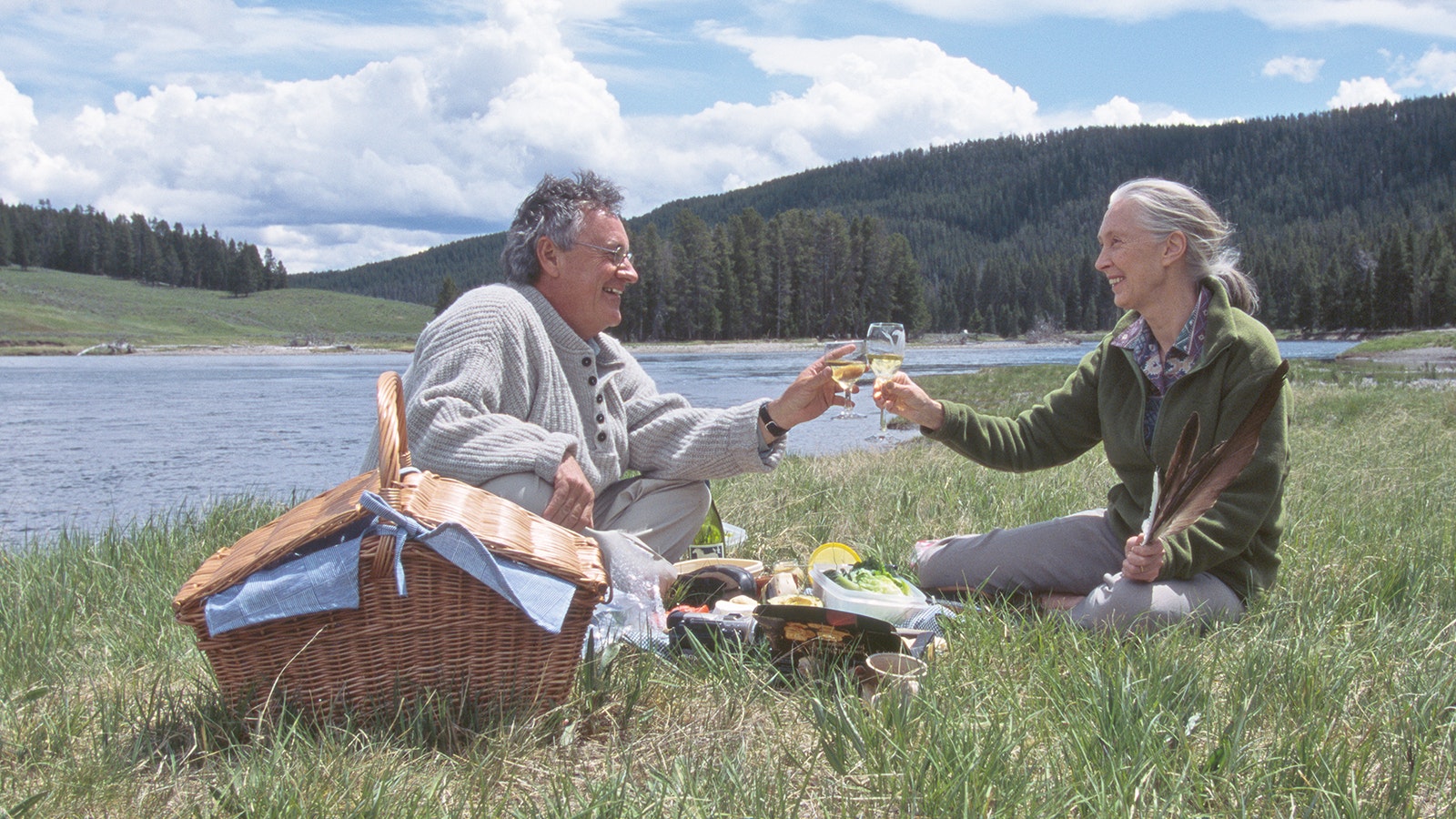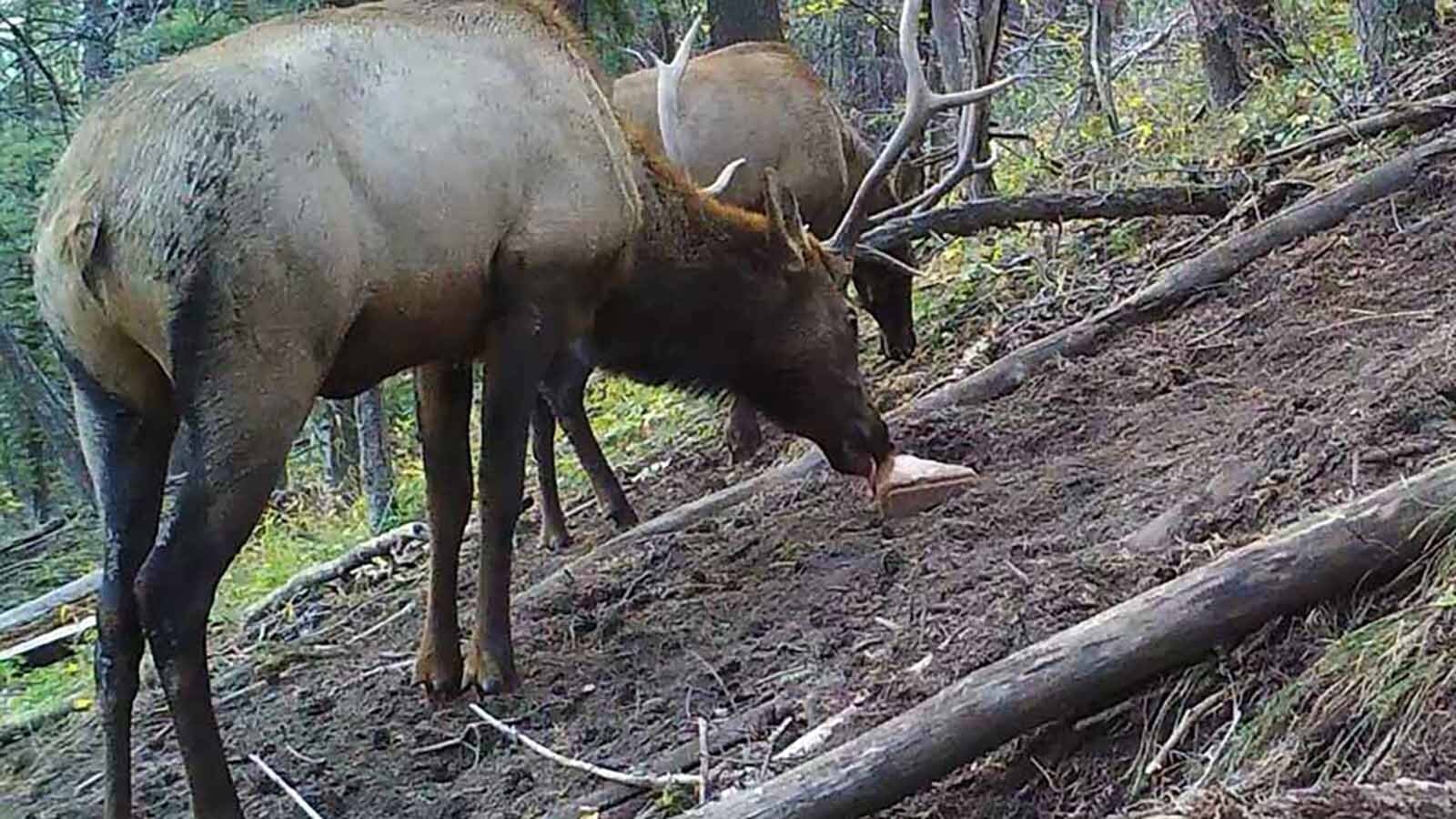It was 2019 when the Gittleson family members saw the first wolf on the ranch property they lease in northern Colorado roughly 12 miles from the Wyoming state line.
It was a lone female that wandered in from Wyoming. A gray male wolf joined her in 2020. Nobody’s quite sure where he came from, but it was also likely from Wyoming.
At first, it seemed like no big deal, Kim Gittleson told Cowboy State Daily.
“They would bump (startle) the cattle occasionally,” but never took it any further than that, she said.
Then the two wolves had six pups, forming what became known as the North Park pack, Colorado’s first verified established wolf pack in decades.
The adult wolves needed to teach their offspring to hunt, and the Gittleson’s cattle become part of the lesson plan. Since 2021 they’ve lost 11 cattle: three full-grown cows, two yearlings and six calves, Kim Gittleson said.
‘Grocery Store’ For Wolves
The North Park pack eventually broke up, and some of the wolves crossed back over into Wyoming and were shot by hunters. It’s legal to kill wolves year-round in that part of the Cowboy State.
The big, gray male and a younger black-coated male hung around the ranch together for a time, but the younger male split. He’s thought to be off somewhere to the south now.
That left only the older male hanging out on or near the Gittleson ranch.
However, no sooner had the North Park pack effectively disappeared when new trouble apparently started coming up from the south.
In December 2023, the Colorado Parks and Wildlife Department (CPW) released 10 wolves that had been captured in Oregon and transported to the Centennial State. The wolf reintroduction was authorized by Colorado’s Proposition 114. It barely squeaked by voters Nov. 3, 2020, by a margin of 50.91% to 49.09%.
One of the family’s calves was severely mauled by wolves in February, and they are “fairly certain that was done by some of the Oregon wolves,” Kim Gittleson said.
The Gittleson place seems to be in the middle of where wolves are traversing back and forth from both Colorado and Wyoming directions. And they’re also the only outfit in the area that runs cattle during the winter when the predators are at their hungriest.
“They (wolves) come in during the winter, and we’re the only grocery store that’s available,” Kim Gittleson said.
Regaining Trust
On Saturday, the Gittlesons hosted a gathering at the ranch with numerous Colorado politicians, other ranchers and CPW officials, including Director Jeff Davis.
Davis told the crowd that he realizes the CPW has lost a lot of trust with ranchers since the wolves were transplanted from Oregon. And he hopes that trust can be regained.
Repairing the relationship between CPW and ranchers is becoming more pressing. Current plans are to bring in another 15 wolves, this time from Washington state, perhaps before the end of this year.
A lawsuit has been filed in federal court to have that next round of wolf releases at least delayed, if not canceled, said Howard Cooper, a Meeker, Colorado, rancher. The lawsuit was by the Colorado Conservation Alliance, of which he is a member.
During the discussion, other ranchers told Davis that they also would like to see the next round of reintroductions delayed at least until Colorado’s policy on wolf management and control can be revisited.
Since the reintroduction, there have been 24 confirmed livestock losses to wolves, and it’s still not certain how many have involved survivors of the North Park pack verses the newer wolves from Oregon.
Oregon Wolves Bolder?
Some of the transplanted wolves were from packs with a history of attacking cattle in Oregon.
The Oregon wolves also seem bolder than the ones with Wyoming roots, said the Gittlesons and Grand County, Colorado, Commissioner Merrit Linke.
Non-lethal wolf deterrents don’t seem to be as effective on the newcomer wolves, they said.
During the group’s tour of some of the ranch, patriarch Don Gittleson demonstrated “cracker shells.” Those are a small explosive charge fired from a shotgun that, ideally, burst in mid-air and scare wolves away.
He also explained “fox lights,” or solar-powered, multi-colored flashing lights intended to deter wolves at night.
Spread out across the pasture, they didn’t seem to be effective, Don Gittleson told Cowboy State Daily. But bunched up near ranch headquarters, they’ve seem to have stopped wolves from coming clear down around the buildings.
Those things don’t seem to really frighten the wolves from Oregon, said Linke, who also represents the Middle Park Stock Grower’s Association.
Middle Park has also seen numerous livestock losses.
“They’re using fox lights. They’re using cracker shells, and the wolves are basically just flipping them off,” he said.
Don and Kim Gittleson’s son David said the North Park pack wolves rarely like to get closer to humans than about 300 yards.
Linke said that in Middle Park, the wolves transplanted from Oregon have boldly come to within 30 yards of people.
That very well could be because the North Park pack wolves had roots in Wyoming, where wolves are hunted, Linke said. The wolves in Oregon have never been actively hunted.
Where Are Things Headed?
Even in parts of Colorado far from where the wolves have been so far, there’s worry among some about them showing up.
Colorado state Rep. Barbara McLauchlan, D-Durango, told Cowboy State Daily that her district is quite a distance south of anywhere that wolves have been spotted so far.
But many of her constituents think it’s only a matter of time before the wolves start showing up, “and they really don’t want them there,” she said.
However, it’s also adjacent to the sovereign lands of the Southern Ute Tribe, she added. And the Utes don’t want wolves on their land because of the potential threat to their hunting and livestock.
“If those wolves cross onto the Utes’ land, they’ll be killed,” she said.
Kim Gittleson said her family has dealt with other predators, such as bears and mountain lions, for decades. But wolves are turning out to be something different. And so far, non-lethal deterrents such as fox lights and cracker shells have produced mixed results.
“We’ve been ranching for 43 years and lost maybe two or three cattle to bears,” she said. “And in the past few years, we’ve lost 11 to wolves.”
Mark Heinz can be reached at mark@cowboystatedaily.com.









